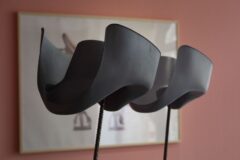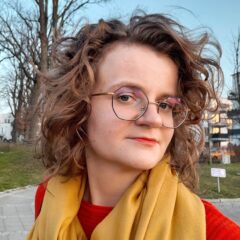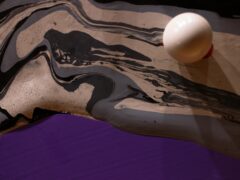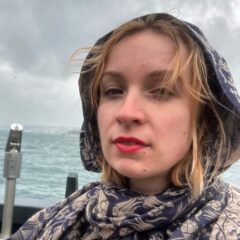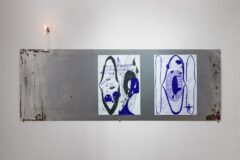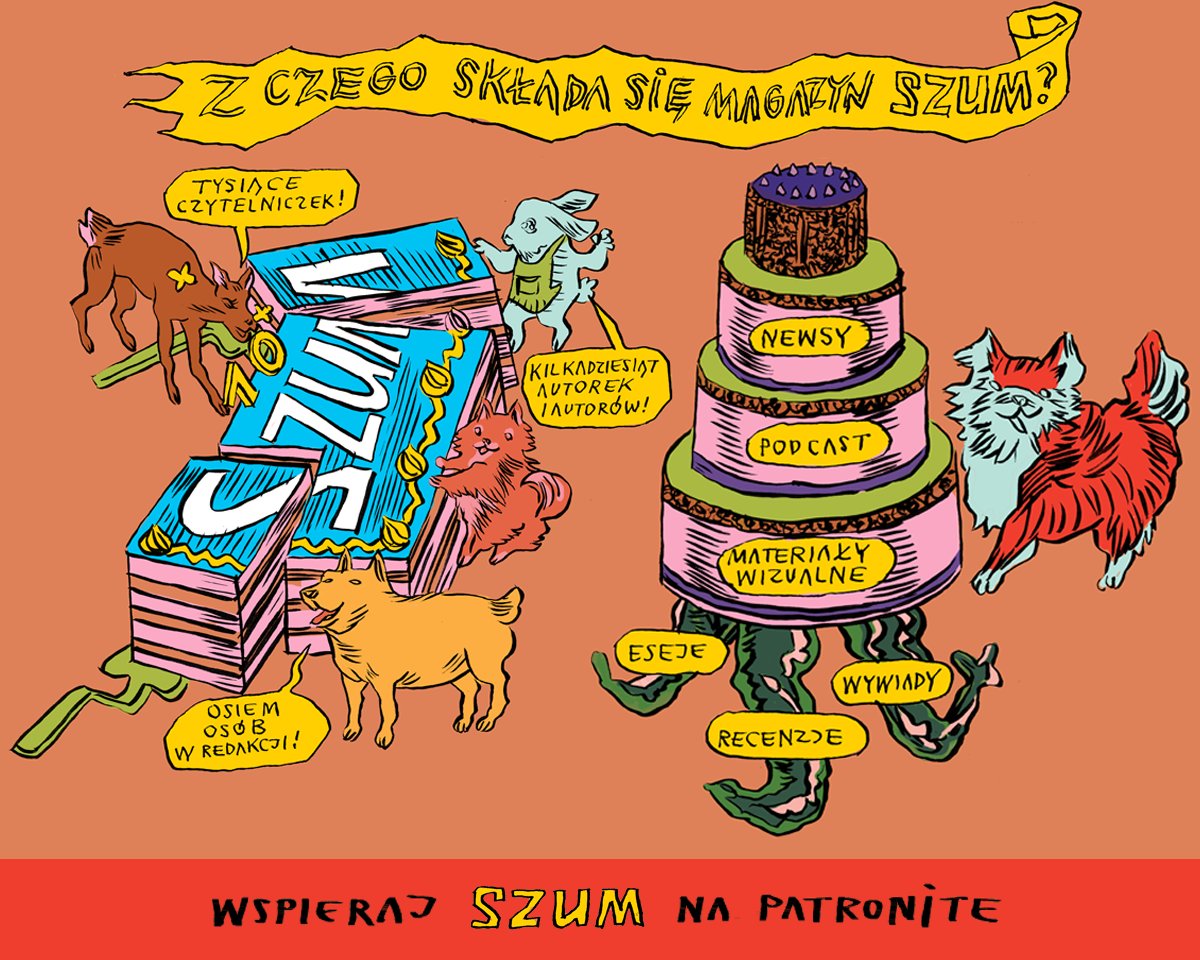„Metoda” w Gdańskiej Galerii Miejskiej / ”The Method” at Gdańsk City Gallery
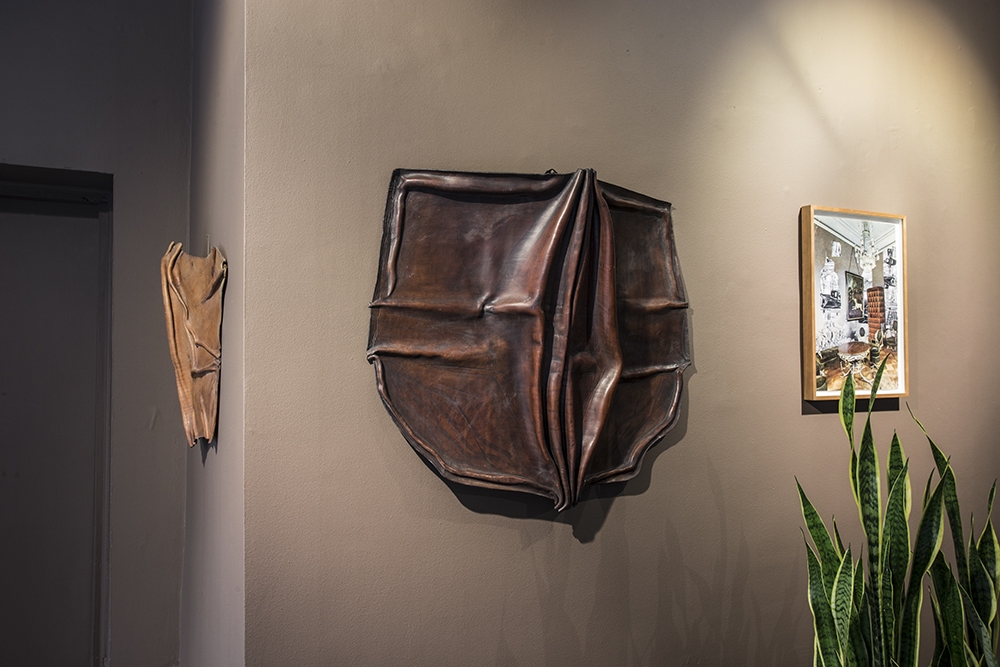
For English version scroll down
PL
Wystawa jest konceptualną kontynuacją wystawy Pauliny Ołowskiej The Method, która pokazana została w Studio Voltaire w Londynie w 2013 roku. Artystka zaprezentowała wówczas wybrane prace Władysława Hasiora, Matthiasa Schauflera, Włodzimierza Wieczorkiewicza oraz własne realizacje. Gdańska odsłona tej wystawy wykorzystuje koncepcyjny algorytm stworzony przez Ołowską. Tworząc swoistą wypowiedź na temat ograniczeń metody funkcjonowania ‘dzieła totalnego’ /Gesamtkunstwerke/, artystka ponownie buduje kalejdoskopową narrację opowiadającą o zróżnicowanych metodologiach pracy artystycznej i związanych z nimi postawach twórczych. Jednocześnie, wykorzystując technologie zapożyczania, wprowadza twórczość zaproszonych przez siebie artystów do centrum pola sztuki, skutecznie wydobywając ich z odległej kapsuły czasu. W zaproponowanym zestawieniu prac artystka z powodzeniem wynajduje fascynujące psycho-folkowe napięcia i pokłady wewnętrznych sprzeczności; eksponuje nadrealistyczne mikrofermentacje powstałe na osi czasu. Skłaniając się ku endemicznym formom sztuki, zestawiając nieoczywiste fragmenty materii w przestrzeni galerii, tworzy osobliwe nostalgiczno-futurystyczne tableau.
Każdy z zaproszonych do wystawy artystów tworzy własne uniwersum. Uniwersum składające się na niezwykle spójny język wypowiedzi artystycznej, które postrzegać można jako swoistą materializację wszelkiego rodzaju lęków, głównie natury egzystencjalnej, ale również nieustającego poczucia niedosytu niedostatecznie rozwijającej się kariery, niezaspokojonych tęsknot za ‘wielkim światem’, złogów psychicznych, urojeń czy halucynacji. Ten nieomal neurotyczny dygot związany jest nie tyle z samym procesem twórczym, fragmentaryczną, kolażową formą i treścią, ile z samym ‘byciem’ – byciem w klinczu, byciem artystą totalnym, a zarazem człowiekiem funkcjonującym w określonych warunkach bytowych i społeczno-politycznych. Każdy z zaproszonych artystów z innych względów i powodów funkcjonuje jako tak zwany outsider. Artystom tym, sytuującym się na obrzeżach głównych nurtów i marginesach określonej geopolityki, ze zdwojoną siłą towarzyszy niebywały heroizm wewnętrzny, przekładający się na imperatyw tworzenia, wznoszący się ponad własne ograniczenia i przeciwności losu. Władysław Hasior i Włodzimierz Wieczorkiewicz, obaj bardzo czujni na wszelkiego rodzaju wynaturzenia i zawarty w nich symbolizm, zawieszeni byli pomiędzy naturą a duchowością, związani z mistycyzmem i religijnością ludową. Hasior tworzył psychodeliczne zestawienia ze znalezionych zużytych przedmiotów, tandetnych dewocjonaliów, romantycznych parafernaliów, fragmentów manekinów i futerkowych elementów zwierzęcych. Wieczorkiewicz mieszkając i tworząc w dawnym protestanckim kościele w Sulminie, niedaleko Gdańska, zajmował się m.in. rękodziełem artystycznym. Jego organiczne płaskorzeźby ze skóry czy metaloplastyka przejawiają totemiczny wręcz, magiczny charakter. Matthias Schauffler natomiast, korzystając z rozproszonej siły napędowej niemieckiej ekspresji, skupia się na motywie męskiego torsu, męskości i jej urojonych reminiscencjach. W swoich melancholijnych, abstrakcyjnych kompozycjach rozkłada na czynniki pierwsze pojęcie ułomnej męskości.
Pomimo przeważającej obecności brikolażowych, fragmentarycznych kompozycji, centralnym punktem wystawy jest figura twórcy-outsidera starającego się określić własne terytorium, powstające częściowo poprzez uzurpację lub bezwolną inercję.
Agnieszka Lasota aranżując wystawę przesuwa proces produkcji znaczeń w kierunku utopijnej płynności. Ta służąca dezorientacji strategia wzmocniona zostaje dzięki sekwencyjnemu sposobowi budowania wycinkowych relacji pomiędzy poszczególnymi pracami w kontekście przywołania domowych, klaustrofobicznych przestrzeni lat 90., których stałym elementem były kwiaty, obrazy, ornamenty, zdobienia rękodzieła artystycznego, odpryski dawnej świetności kultury sarmackiej jak i pseudoluksusowe gadżety czerwonej burżuazji. Quasi-lynchowska, montażowa przestrzeń wystawy zbudowana jest na zasadzie kadrowania określonych fragmentów rzeczywistości i nakładania na nie kolejnych, tworzenia ich wielu możliwych kombinacji. Takie zestawienie prac tworzy określone nakładające się na siebie możliwości recepcji, koncentrujące się m.in. na: ‘męskości’ wystawy robionej przez kobietę, ulotnym surrealizmie, mocy podświadomości, próbach wydobycia Gesamtkustwerke, dekadenckim myśleniu o przedmiocie i o metodzie pracy twórczej, jak i samym sposobie odbierania rzeczywistości w luźnych fragmentach scenografii wystawy.
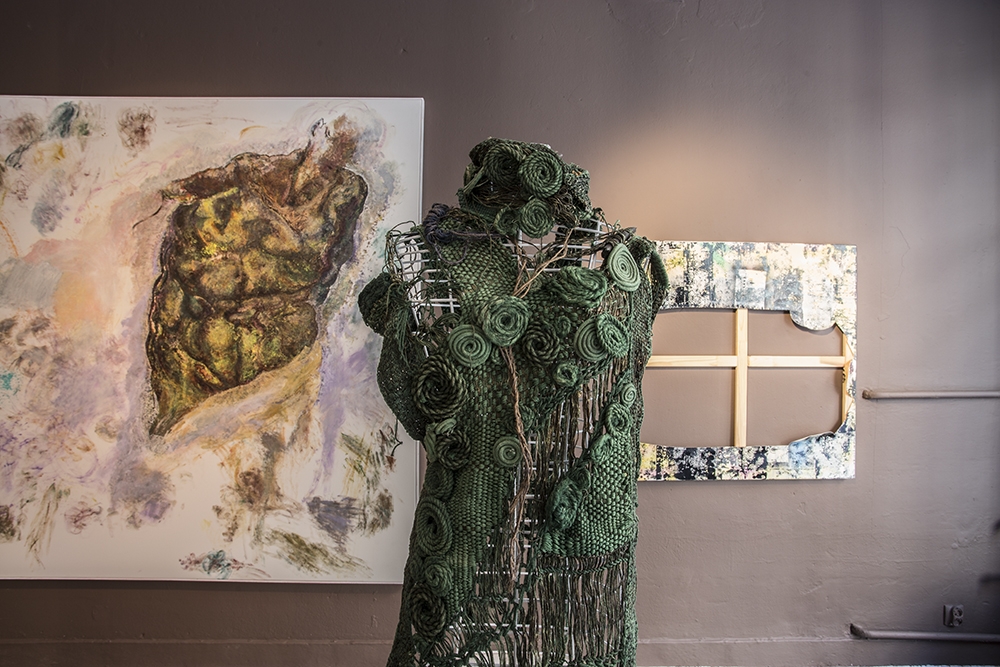
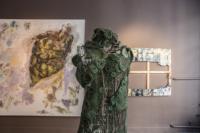

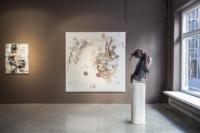

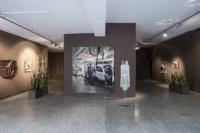


Paulina Ołowska
Urodziła się w 1976 roku w Gdańsku. Mieszka i pracuje w Rabce oraz w Londynie. Uzyskała dyplom licencjacki w zakresie sztuk pięknych na School of the Art Institute of Chicago oraz dyplom magistra sztuk pięknych na Akademii Sztuk Pięknych w Gdańsku. Laureatka nagrody The Aachen Art Prize w 2014 roku. Twórczość Ołowskiej prezentowana były na całym świecie w ramach wielu wystaw indywidualnych oraz projektów artystycznych, m. in. w The Kitchen, Nowy Jork (2017), Tate Modern, Londyn, (2015), Ludwig Forum für Internationale Kunst, Aachen (2015), Zachęta, Warszawa, (2014), Stedelijk Museum, Amsterdam (2013), Kunsthalle Basel, Bazylea (2013), CCA Wattis Institute for Contemporary Arts, San Francisco (2010), Camden Arts Centre, Londyn (2009), Pinakothek der Moderne, Monachium (2009) i Sammlung Goetz, Monachium (2007).
Prace artystki pokazywane były także na dużych wystawach grupowych, m. in. w San Francisco Museum of Modern Art, San Francisco (2016), Grundy Art Gallery, Blackpool (2016), Centre Pompidou, Paryż (2016), Manifesta 11, The European Biennal of Contemporary Art, Zurych (2016), Museum der Moderne, Salzburg (2016), Haus der Kunst, Monachium (2015), Baltic Centre for Contemporary Art, Gateshead (2014), Muzeum Sztuki Współczesnej Serralves, Porto (2014), Muzeum Sztuki Nowoczesnej, Warszawa (2013), Museum of Modern Art, Nowy Jork (2012), BOZAR Palais des Beaux-Arts, Bruksela (2011), New Museum, Nowy Jork (2011), KW Institute for Contemporary Art, Berlin (2010) oraz Muzeum Sztuki Współczesnej, Barcelona (2009). Jej prace znajdują się w prestiżowych kolekcjach prywatnych i publicznych, m. in. w Tate, Londyn; Sammlung Boros, Berlin; Städtisches Museum Abteiberg, Mönchengladbach; Stedelijk Museum, Amsterdam; Muzeum Sztuki Nowoczesnej, Warszawa; Muzeum Sztuki Współczesnej Serralves, Porto; San Francisco Museum of Modern Art, San Francisco; oraz Muzeum Sztuki Nowoczesnej, Nowy Jork.
Władysław Hasior (1928–1999)
Rzeźbiarz, malarz, scenograf i pedagog. Prowokator i buntownik. Wykładał w Państwowym Liceum Technik Plastycznych w Zakopanem, Państwowej Wyższej Szkole Sztuk Plastycznych we Wrocławiu, pracował też jako scenograf tamtejszego Teatru Polskiego. Był członkiem międzynarodowej grupy artystów i pisarzy Phases. Mieszkał w Zakopanem, gdzie w 1985 roku w dawnej leżakowni sanatorium „Warszawianka” otworzył swoją autorską galerię. Od końca lat 50. tworzył ze znalezionych przedmiotów i ich części liczne asamblaże o wymowie metaforycznej; od połowy lat 60. powstawały patetyczno-groteskowe Sztandary. Realizował performanse rzeźbiarskie z wykorzystaniem żywiołów natury: wiatru, wody i ognia, oraz monumentalne rzeźby, między innymi Prometeusz rozstrzelany (Kuźnice 1964), Żelazne organy (Snozka 1966), Golgota (Montevideo 1969), Słoneczny rydwan (Södertälje k. Sztokholmu 1972–1976). Hasior wystawiał swoje prace na licznych wystawach krajowych i zagranicznych. Jego prace znajdują się w muzeach krajowych w Krakowie, Warszawie, Łodzi, Poznaniu, Szczecinie, Wrocławiu, Bydgoszczy, Lublinie, Nowym Sączu, Zakopanem oraz w muzeach zagranicznych: w Helsinkach, Paryżu, Sztokholmie, Oslo, Sao Paulo, Rzymie, Mediolanie, Edynburgu, Bochun, Duisburgu, Amsterdamie, a także w bardzo licznych zbiorach prywatnych. Galeria artysty wciąż funkcjonuje w Zakopanem jako filia Muzeum Tatrzańskiego.
Matthias Schaufler (ur. 1964)
Mieszka i pracuje w Berlinie. W latach 1988–1990 studiował na Hochschule für Bildende Künste w Hamburgu (w klasie Franza Erharda Walthera i Mike’a Hentza), a w latach 1990–1991 w Städelschule we Frankfurcie nad Menem (w klasie Martina Kippenbergera). Schaufler wystawia swoje prace od 1989 roku. W ostatnim dziesięcioleciu przedmiotem jego zainteresowania stała się gra zależnościami pomiędzy figurą a tłem. Każda z jego prac oparta jest na innej metodologii i zestawie przyjętych ograniczeń. Jego płótna z 2006 i 2007 roku zawierają niejasno zasugerowane narracje o zabarwieniu seksualnym związane z historiami ukazanych w nich kąpiących się postaci. Z kolei w cyklu powstałym w 2008 roku figura ulega rozczłonkowaniu, a prace ukazują męski tors wyłaniający się z gęstej, białej aury. W cyklu z 2015 roku widzimy jedynie niewyraźnie zarysowane, biomorficzne kontury obiektów, które jawią się jako oklapłe bukiety zwiędłych kwiatów ukazanych w głębokiej purpurze, granacie i czerni. Najnowsze obrazy w większym stopniu wykorzystują wachlarz barw, a figura zaznaczona jest w nich jedynie kaligraficznymi śladami pędzla powstającymi w wyniku krótkich obrotowych ruchów dłoni artysty. Prace Schauflera prezentowane były w ramach wielu wystaw indywidualnych m.in. w Galerie Hammelehle und Ahrens, Kolonia, Niemcy (2016), Kunstverein Leverkusen Schloß Morsbroich, Leverkusen, Niemcy (2013), Galerie Cinzia Friedlaender, Berlin, Niemcy (2012), Patrick Painter Inc., Santa Monica, USA (2007). Jego twórczość pokazywana była także na wystawach zbiorowych m.in. w Salon Dahlmann, Berlin, Niemcy (2017), Meliksetian|Briggs, Los Angeles, USA (2017), Villa Merkel, Galerien der Stadt Esslingen, Niemcy (2015), Michael Thibault Gallery, Los Angeles, USA (2014), Neue Galerie Gladbeck, Niemcy (2014), Museum Folkwang, Essen, Niemcy (2014), Cokkie Snoei Gallery Rotterdam, Holandia (2014), KW, Berlin, Niemcy (2013), Studio Voltaire, Londyn, Wielka Brytania (2013), Galerie Max Hetzler, Berlin, Niemcy (2013), Corbett vs. Dempsey, Chicago, USA (2011), Patrick Painter Inc., Los Angeles, USA (2007).
Włodzimierz Wieczorkiewicz (1945-2001)
Studiował na gdańskiej Akademii Sztuk Pięknych w latach 1966-1972/ dyplom u prof. Hanny Żuławskiej. Artysta rzeźbiarz, scenograf, animator kultury. Założyciel teatru autorskiego ‘ą’, który operował w kategoriach ‘zdarzenia scenicznego’, łącząc w sobie elementy sztuk wizualnych i teatru (1968-1973). Zespól tworzyli studenci rzeźby, malarstwa i architektury. Bezpośrednią kontynuacją działań performatywnych była grupa artystyczna ‘ą”, którą w 1972 roku założył z Markiem Borowskim i Arturem Pietraszewiczem, organizująca happeningowe spektakle plastyczne. Od 1972 roku współpracował z Telewizją Gdańską i teatrami dramatycznymi tworząc scenografie do przedstawień teatralnych, baletowych i muzycznych. We swoich wczesnych realizacjach rzeźbiarskich zajmował się ceramiką oraz płaskorzeźbami tworzonymi z teatralnych materiałów modelarskich, by następnie skupić się m.in. na sztuce użytkowej – wykonując płaskorzeźby w skórze. W 1979 r. Wieczorkiewicz i jego żona Jolanta Cerebież- Tarabicka zakupili kościół ewangelicki w Sulminie, który odrestaurowali w latach 1980-1985 adaptując go na prywatną Galerię Sulmin oraz mieszkanie. Miejsce to było przyjazne artystom i miłośnikom sztuki. Od połowy lat 80. Wieczorkiewicz organizował tam wernisaże, koncerty oraz towarzyskie spotkania malarzy, literatów i muzyków, na które przyjeżdżali goście z całej Europy. Jednym z animowanych cykli był projekt „W pracowni gdańskich artystów”, którego idea polegała na podarowaniu przez Wieczorkiewicza swojej pracy innemu artyście, który z kolei tworzył instalację wkomponowując w nią własne dzieła. Część dorobku artysty została utracona w pożarze Galerii w 2005 r.
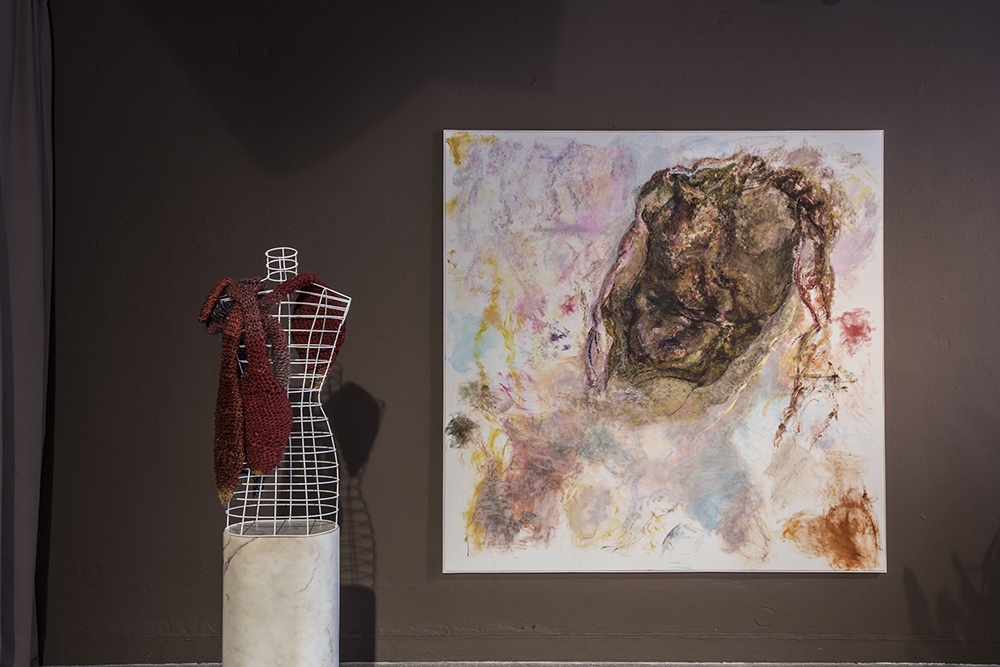
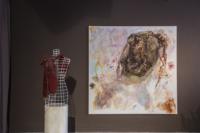

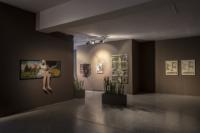
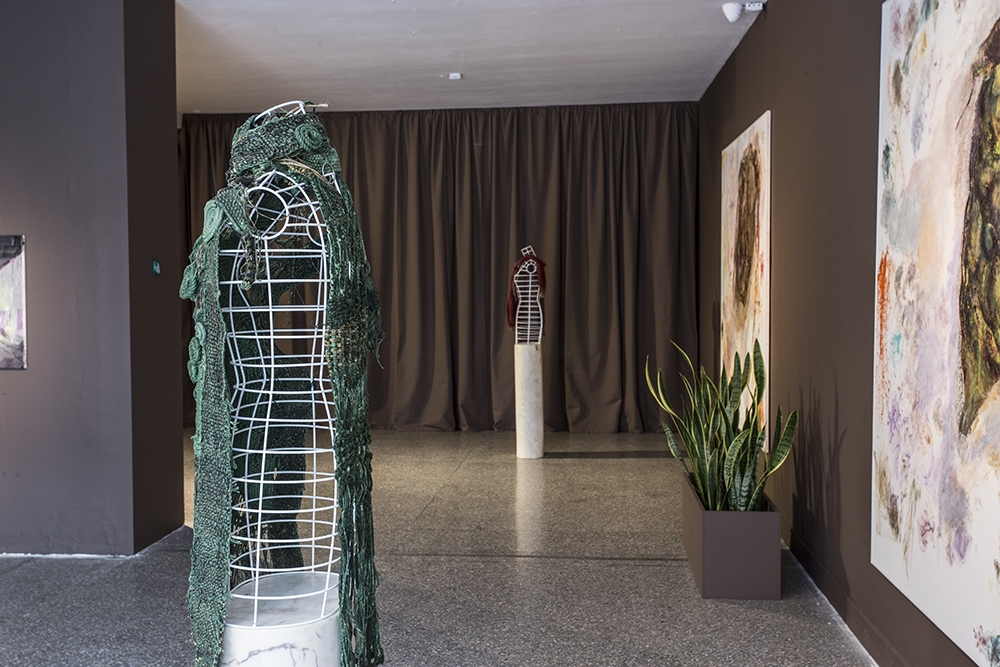
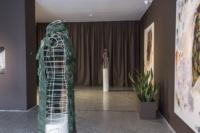
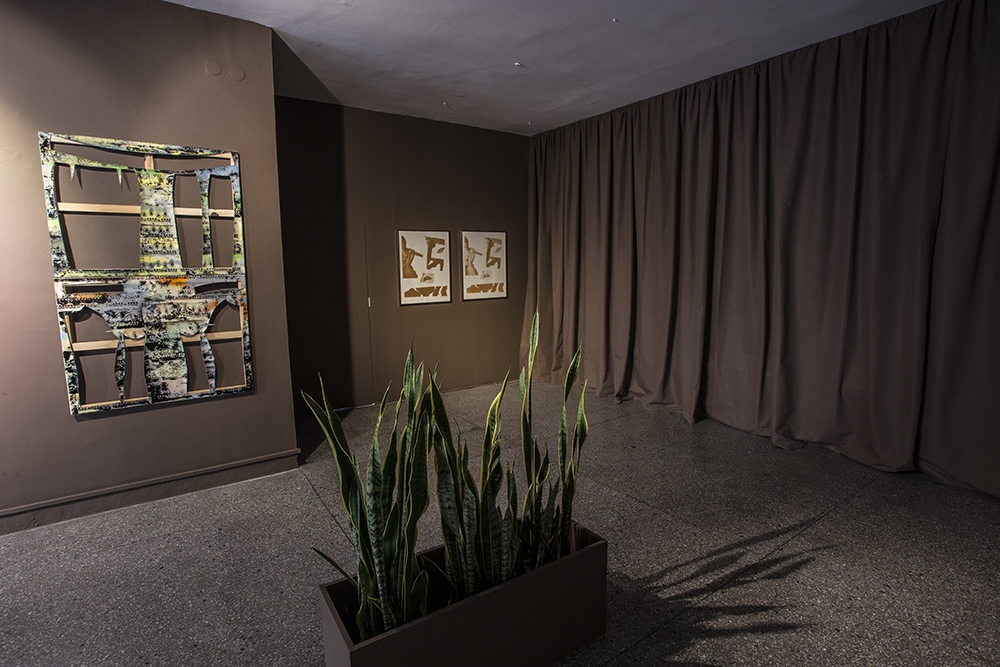
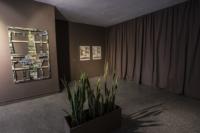
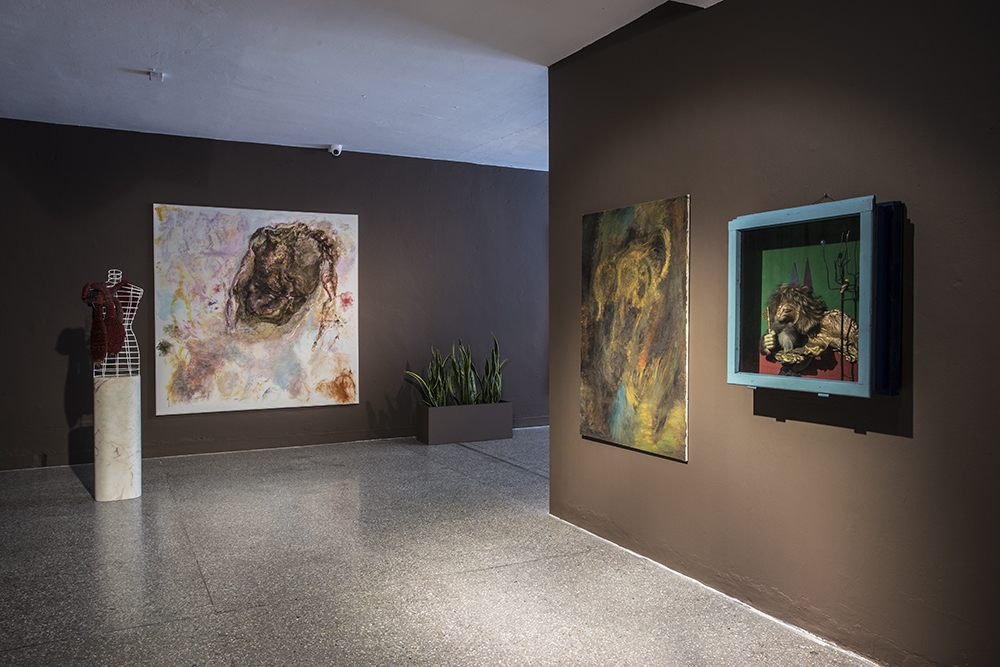


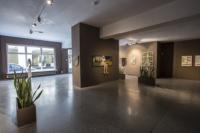
ENG
This exhibition is a conceptual continuation of Paulina Ołowska’s show The Method, which was held at London’s Studio Voltaire in 2013. The artist presented selected works by Władysław Hasior, Matthias Schaufler, Włodzimierz Wieczorkiewicz and her own projects. The Gdańsk iteration of the exhibition relies on a conceptual algorithm built by Ołowska. By making a statement on the limitations that apply to the functioning of a total work of art /Gesamtkunstwerk/, the artist once again develops a kaleidoscopic narrative devoted to the varied methodologies of artistic work and their related artistic stances. At the same time, tapping into appropriation technologies, she introduces the practice of invited artists to the centre of the field of art, thus effectively extracting them from a distant time capsule. In the proposed configuration of works, Ołowska succeeds in tracing fascinating psycho-folk tensions and layers of internal contradictions; she exposes the surrealist micro-fermentations that exist on the timeline. Turning towards endemic forms of art, juxtaposing unobvious fragments of matter in the gallery space, she creates a unique nostalgic-futuristic tableau.
Each of the invited artists creates their own universe. Such a universe forms an exceptionally coherent language of artistic statement, which can be seen as a materialisation of all kinds of fears – mainly existential – but also an incessant sense of frustration with an insufficiently developed career, an unsatisfied longing for “high society”, psychic accretion, delusions or hallucinations. This almost neurotic shivering bears relation not so much to the highly creative process, the fragmentary collage-like form and content, but also to the sheer “being” – being in a clinch, being a total artist, while at the same time being a human that functions under specific living and socio-political conditions. For different reasons, each of the invited artists functions as an outsider. Situated on the fringes of the main currents and on the margins of specific geopolitics, the artists are accompanied by an uncommon inner heroism that translates itself into the imperative to create, which rises above their own limitations and adversities of fate. Władysław Hasior and Włodzimierz Wieczorkiewicz, both highly sensitive to all kinds of denaturalisation and the symbolism inherent therein, were suspended between nature and spirituality, affiliated with mysticism and folk religion. Hasior created psychedelic assemblages of found used objects, kitschy devotional items, romantic paraphernalia, fragments of mannequins and elements of animal fur. Living and working in a former Protestant church in Sulmin near Gdańsk, Wieczorkiewicz engaged with artisanal craft, among other fields. His organic reliefs made of leather and his metalwork betray a totemic magical character. In turn, Matthias Schauffler taps into the dispersed lifeblood of German expression to focus on the motif of the male torso, masculinity and its imaginary reminiscences. His melancholic, abstract compositions deconstruct the notion of frail masculinity.
Despite the prevailing presence of bricolage-like fragmentary compositions, the centre of the exhibition is occupied by the outsider-artist figure who strives to determine their own territory, created partly through usurpation and partly through passive inertia.
In her arrangement of the exhibition, Agnieszka Lasota shifts the process of the production of meaning towards utopian liquidity. Aiming to disorientate, the strategy is enhanced by the sequential manner of building fragmentary relations between individual works in the context of evoking the claustrophobic domestic spaces of the 1990s whose fixed elements included flowers, paintings, ornaments, artisanal decorations – splinters of the former glory of Sarmatian culture, as well as the pseudo-luxury gadgets of the red bourgeoisie. Evoking the spirit of film editing, the quasi-Lynchian space of the exhibition draws on the principle of framing specific fragments of reality and making them overlap with others, thus creating many possible combinations. Such a configuration of works generates specific overlapping possibilities of reception, focusing on such themes as the “masculinity” of an exhibition arranged by a woman, elusive surrealism, the power of the subconscious, attempts to unearth Gesamtkustwerk, decadent reflection on the object and method of creative work, and the very manner of perceiving reality in the loose fragments of the exhibition’s design.
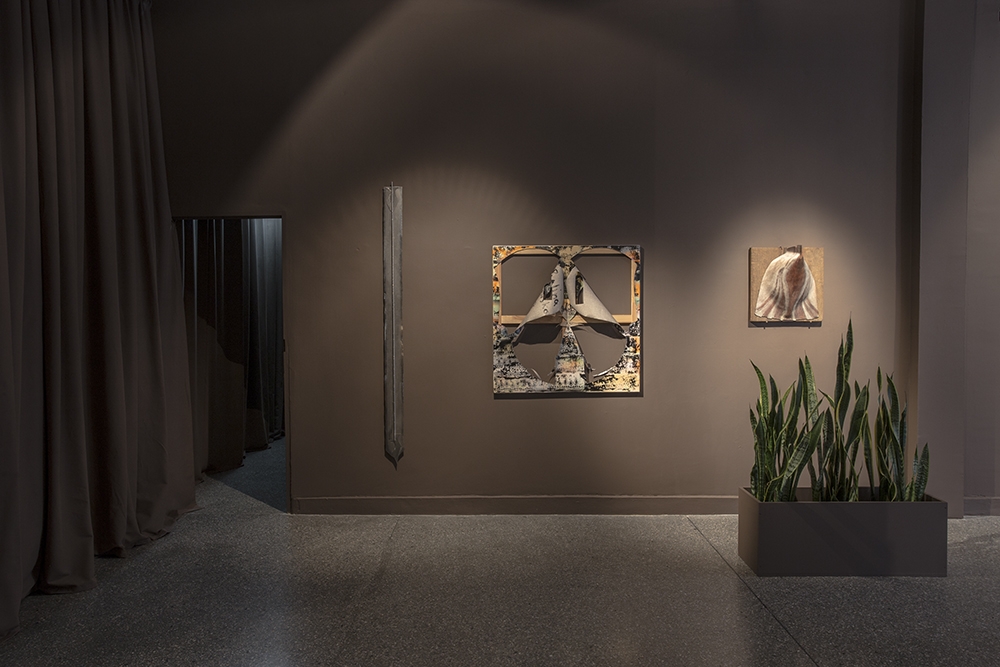



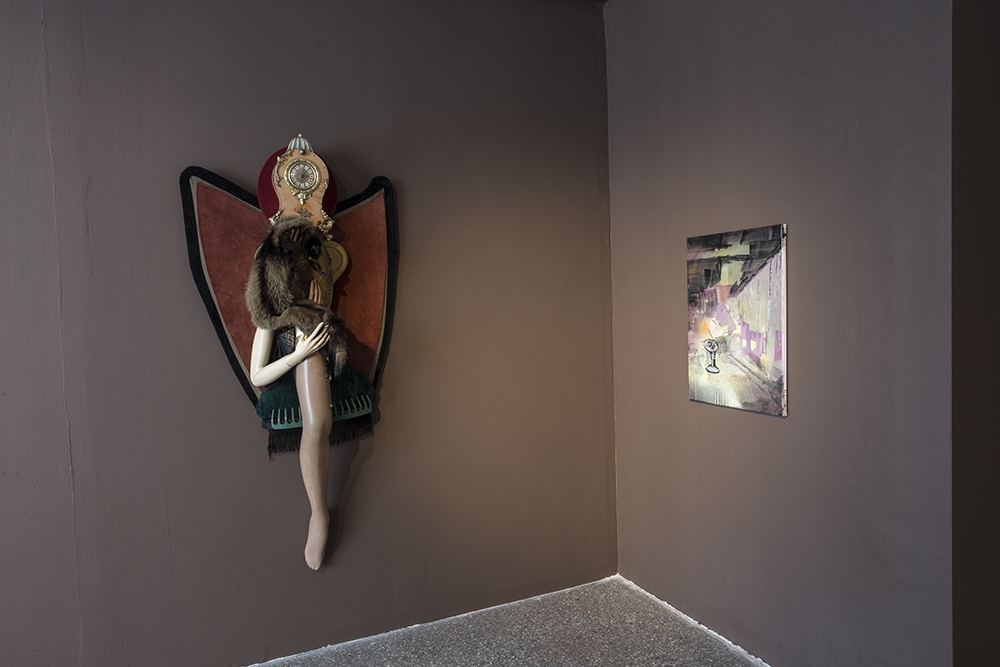
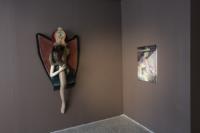

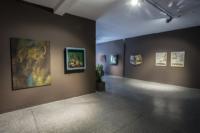
Paulina Olowska
Was born in 1976 in Gdansk, Poland and lives and works in Rabka, Poland and London, UK. She received her BFA from the School of the Art Institute of Chicago, Chicago, IL and her MFA from The Academy of Fine Arts, Gdansk, Poland. She was recently awarded The Aachen Art Prize (2014). Olowska’s work has been shown extensively internationally and has been the subject of numerous solo exhibitions and projects, including The Kitchen, New York, NY (2017), Tate Modern, London, UK (2015), Ludwig Forum für Internationale Kunst, Aachen, Germany (2015), The Zachęta National Gallery of Art, Warsaw, Poland (2014), The Stedelijk Museum, Amsterdam, Netherlands (2013), Kunsthalle Basel, Basel, Switzerland (2013), CCA Wattis Institute for Contemporary Arts, San Francisco, CA (2010), Camden Arts Centre, London, UK (2009), Pinakothek der Moderne, Munich, Germany (2009) and Sammlung Goetz, Munich, Germany (2007). Major group exhibitions include San Francisco Museum of Modern Art, San Francisco, CA (2016), Grundy Art Gallery, Blackpool, UK (2016), Centre Pompidou, Paris, France (2016), Manifesta 11, The European Biennal of Contemporary Art, Zurich, Switzerland (2016), Museum der Moderne, Salzburg, Austria (2016), Haus der Kunst, Munich, Germany (2015), Baltic Centre for Contemporary Art, Gateshead, UK (2014), Serralves Museum of Contemporary Art, Porto, Portugal (2014), Museum of Modern Art, Warsaw, Poland (2013), Museum of Modern Art, New York, NY (2012), BOZAR Palais des Beaux-Arts, Brussels, Belgium (2011), New Museum, New York, NY (2011), KW Institute for Contemporary Art, Berlin, Germany (2010) and Museum of Contemporary Art, Barcelona, Spain (2009). Her work is in major private and public collections including Tate, London, UK, Sammlung Boros, Berlin, Germany, Städtisches Museum Abteiberg, Mönchengladbach, Germany, Stedelijk Museum, Amsterdam, Netherlands, Museum of Modern Art, Warsaw, Poland, Serralves Museum of Contemporary Art, Porto, Portugal, San Francisco Museum of Modern Art, San Francisco, CA and Museum of Modern Art, New York, NY.
Władysław Hasior (1928–1999)
Sculptor, set designer and pedagogue. Provocateur and rebel. Lecturer at the State Secondary School of Visual Art Techniques in Zakopane and the State Higher School of Visual Arts in Wrocław. Worked as a set designer at the Polish Theatre in Wrocław. With a scholarship from the Ministry of Culture of France, Hasior travelled around Europe and visited Ossip Zadkine’s studio in Paris, among other places. A member of the international artists’ and writers’ group Phases. Hasior lived in Zakopane, where he opened his own gallery in the former storage cellar of the “Warszawianka” sanatorium. Since the end of the 1950s, he created numerous metaphorical assemblages using found objects and their parts; since the mid-1960s, his works included pompous-grotesque Banners. Hasior also carried out sculptural performances using the natural elements: wind, water and fire, as well as monumental sculptures, such as Prometheus Executed (Kuźnice, 1964), Iron Organs (Snozka, 1966), Golgotha (Montevideo, 1969) and Sun Chariot (Södertälje near Stockholm, 1972–1976). His works have been exhibited at numerous shows in Poland and abroad; they belong in the collections of state museums in Krakow, Warsaw, Łódź, Poznań, Szczecin, Wrocław, Bydgoszcz, Lublin, Nowy Sącz and Zakopane, and museums abroad in Helsinki, Paris, Stockholm, Oslo, Sao Paulo, Rome, Milan, Edinburgh, Bochun, Duisburg and Amsterdam, as well as in a wide range of private collections. The artist’s gallery continues to operate as a branch of the Tatra Mountains Museum.
Matthias Schaufler (b. 1964)
Lives and works in Berlin. He studied from 1988 to 1990 at the Hochschule für Bildende Künste in Hamburg, Germany (classes of Franz Erhard Walther and Mike Hentz) and from 1990 to 1991 at the Städelschule Frankfurt/Main, Germany (class of Martin Kippenberger). Schaufler has been exhibiting since 1989, and the last decade has seen him playing with formulations of figure and ground. Each subsequent body of work has taken on a new methodology and a new set of constraints, but each involves marks made by brushes and palette knives: scratches, smudges, wipes and splashes. While canvases from 2006 and 2007 suggest vaguely sexual narratives referencing the history of bathers depicted in painting, a series from 2008 dismembered the figure, picturing muscular male torsos emerging from thick white atmospheres. A series from 2015 features only vaguely biomorphic contours in what appear to be weeping bouquets of wilted flowers in deep purple, navy and black. In recent paintings, which sample more generously from the colour spectrum, the figure is called to mind only by the calligraphic strokes so clearly produced by a flick and twist of the artist’s hand. Schaufler’s work has been shown in numerous solo exhibitions at Galerie Hammelehle und Ahrens, Cologne, Germany (2016), Kunstverein Leverkusen Schloß Morsbroich, Leverkusen, Germany (2013), Galerie Cinzia Friedlaender, Berlin, Germany (2012), Patrick Painter Inc., Santa Monica, USA (2007), Saarlandmuseum Saarbrücken, Germany (2006), dépendance, Brussels, Belgium (2006), Galerie Gerhard Hofland, Haarlem, Netherlands (1999), Galerie Ascan Crone, Hamburg, Germany (1998), Wiensowski und Harbord, Berlin, Germany (1998), Galerie Hammelehle und Ahrens, Stuttgart, Germany (1998), Galerie Bleich-Rossi, Graz, Austria (1997), amongst other venues. Group exhibitions include Salon Dahlmann, Berlin, Germany (2017), Meliksetian|Briggs, Los Angeles, USA (2017), Villa Merkel, Galerien der Stadt Esslingen, Germany (2015), Michael Thibault Gallery, Los Angeles, USA (2014), Neue Galerie Gladbeck, Germany (2014), Museum Folkwang, Essen, Germany (2014), Cokkie Snoei Gallery Rotterdam, Netherlands (2014), KW Institute for Contemporary Art, Berlin, Germany (2013), Studio Voltaire, London, UK (2013), Galerie Max Hetzler, Berlin, Germany (2013), Corbett vs. Dempsey, Chicago, USA (2011), Patrick Painter Inc., Los Angeles, USA (2007), Museum Schloss Hardenberg, Velbert, Germany (2003), INIT-Kunsthalle, Berlin, Germany (1999), Galerie Daniel Buchholz, Cologne, Germany (1996), Provinciaal Museum, Hasselt, Netherlands (1994), Grafica 1, Innsbruck, Austria (1993), Sammlung Kippenberger, Paris Bar, Berlin (1991).
Włodzimierz Wieczorkiewicz (1945–2001)
Studied at the Academy of Fine Arts in Gdańsk between 1966-1972. A sculptor, set designer and cultural animator. Founder of the author’s theatre “ą”, which operated in the category of “stage events”, combining elements of visual arts and theatre (1968–1973). The theatre team consisted of students of sculpture, painting and architecture. Those performative activities were pursued further by the artistic group „ą”, established by Wieczorkiewicz in 1972 alongside Marek Borowski and Artur Pietraszewicz, which organised happening-like visual arts spectacles. Since 1972, he has been collaborating with Gdańsk Television and dramatic theatres as a set designer in theatre, ballet and musical spectacles. His early sculptural work focussed on ceramics and reliefs made of theatrical modelling materials and later went on to concentrate on applied arts – making leather reliefs – amongst other disciplines. In 1979, Wieczorkiewicz and his wife Jolanta Cerebież-Tarabicka purchased the Sulmin evangelical church, which they restored between 1980 and 1985 to adapt it for the needs of the private Sulmin Gallery and as their apartment. The venue welcomed artists and art lovers. Since the mid-1980s, Wieczorkiewicz has organised exhibition openings there, as well as concerts and social gatherings of painters, writers and musicians, including guests from the whole of Europe. One of the pursued cycles was titled “At the Studios of Gdańsk Artists”, which consisted of Wieczorkiewicz offering his work to another artist, who in turn created an installation by incorporating it into their own works. Part of the artist’s oeuvre was lost in a fire that broke out at the Gallery in 2005.
Przypisy
Stopka
- Osoby artystyczne
- Paulina Ołowska, Władysław Hasior, Matthias Schaufler, Włodzimierz Wieczorkiewicz
- Wystawa
- Metoda / The Method
- Miejsce
- Gdańska Galeria Miejska 2 / Gdańsk City Gallery
- Czas trwania
- 15.09–29.10.2017
- Osoba kuratorska
- Patrycja Ryłko
- Strona internetowa
- ggm.gda.pl


